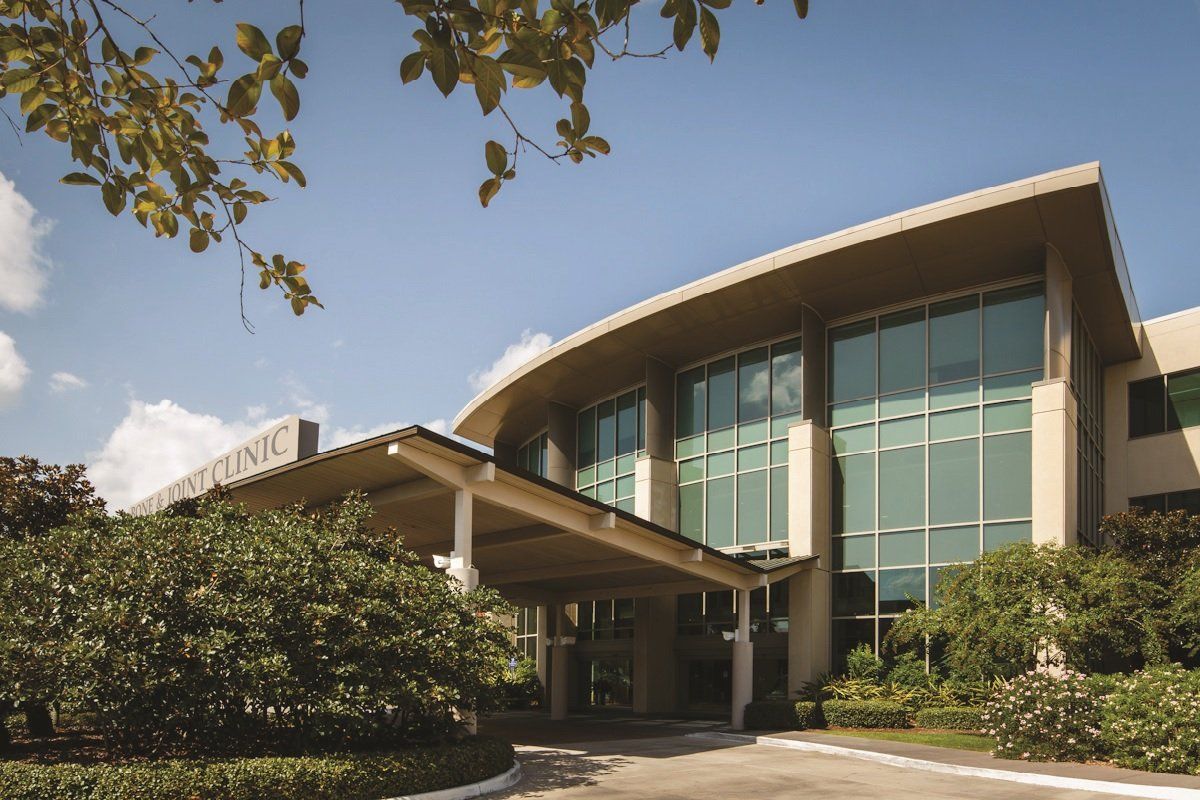THUMB ARTHRITIS TREATMENT IN BATON ROUGE
What is Thumb Arthritis?
In the human body, joints are formed when the end of two bones meet. A layer of smooth cartilage lines the end of each bone. Cartilage allows the two bones to move and glide against each other without causing pain or damage.
Osteoarthritis is a degenerative arthritic condition that causes the protective layer of cartilage to deteriorate. When this condition occurs in the joint that connects the wrist to the thumb, it is known as basal joint arthritis or thumb arthritis.
This disease disrupts the sufferer's ability to engage in daily life fully. However, there are treatments available that can reduce discomfort, slow deterioration, and restore function and mobility.
Symptoms & Risk of Thumb Arthritis
Basal joint arthritis sufferers may notice these signs and symptoms.
- Loss of hand strength.
- Inability to grip a pencil or pen.
- Pain with opening jars.
- Pain with pushing up from a chair or out of a bathtub.
- Pain and stiffness around the bottom of the thumb and wrist.
- Swelling and redness around the affected joint.
The basal joint is an integral part of the human hand. This simple structure grants the ability to pinch, pull, twist, and perform countless movements with our fingers and hands. Thumb arthritis negatively impacts the patient’s ability to function in daily life.
These are some of the most common risk factors associated with thumb arthritis.
- Women over the age of 40.
- High body-mass index (BMI).
- Coexisting joint conditions like malformities or ligament laxity.
- Previous injuries.
- A job history that relies on repetitive motion (typing, machine operations, etc.)
- Rheumatoid or osteoarthritis.
Doctors use a combination of questions, physical examinations, and imaging to confirm a thumb arthritis diagnosis.
Treatments for Thumb Arthritis
As the cartilage cushion wears away, the unprotected hand bones rub against each other. This friction slowly wears away the bone's surface, causing the damaged tissues to swell in an attempt to repair itself. This swelling causes the pain and loss of mobility that characterizes thumb arthritis.
Treatments aimed at reducing inflammation around the basal joint is an effective way to reduce pain with movement. These are the most common drug therapies for basal joint arthritis.
- Topical medications that contain numbing or pain-relieving ingredients are rubbed directly onto the affected joint.
- Over-the-counter medication reduces excess inflammation without a narcotic effect.
- In cases of severe pain or immobility, doctors may choose to inject a steroid directly into the joint.
For acute pain, a splint or brace helps reduce symptoms. These devices cradle the area around the basal joint and thumb. Like a cast over a broken bone, a splint immobilizes the affected joint, which gives it time to repair torn tissues and restores proper alignment.
Physical therapy and exercises strengthen the muscles that support the thumb. Stronger hand muscles reduce the strain on compromised joints. Successful physical therapy is also an integral part of restoring lost functions due to damaged joints.
MAKE AN APPOINTMENT WITH DR. GARON
A Board-Certified Orthopedic Surgeon at the Bone & Joint Clinic of Baton Rouge.
Surgical Options for Thumb Arthritis
In advanced cases of thumb arthritis, surgery might be the only option for significant and long-term relief. Doctors may suggest one of several surgical interventions for severe cases of thumb arthritis.
- Arthrodesis or joint fusion. This procedure fuses the two bones together. Patients lose a significant amount of flexibility. However, they are generally still able to enjoy some degree of use without pain.
- Osteotomy. Surgeons reshape damaged and deformed joint structures to remove jagged areas that cause irritation and pain. Bones may also be realigned to fit more properly within their groove.
- Trapeziectomy with ligament reconstruction. The trapezium, a small bone at the base of the thumb, is removed. This removal is often supplemented with a tendon graft to both stabilize the thumb and provide a soft pillow for the thumb to rest on. This tendon graft allows for pain relief and restoration of function.
After surgery, doctors prescribe medication and physical therapy to support the healing process.
Patients should seek the advice of a thumb arthritis specialist for a better understanding of their treatment options.




